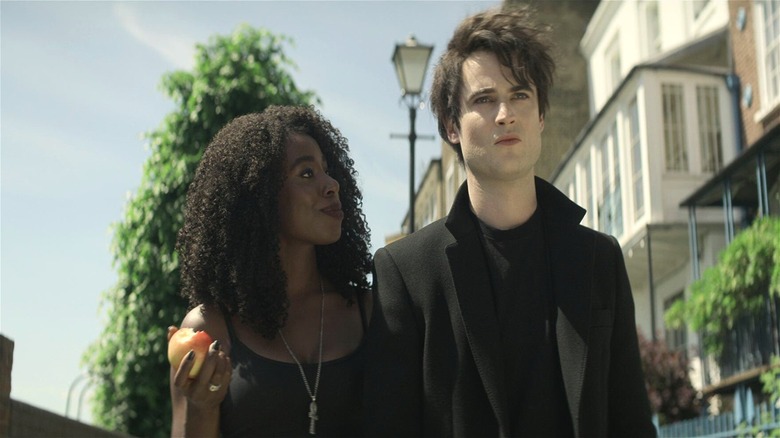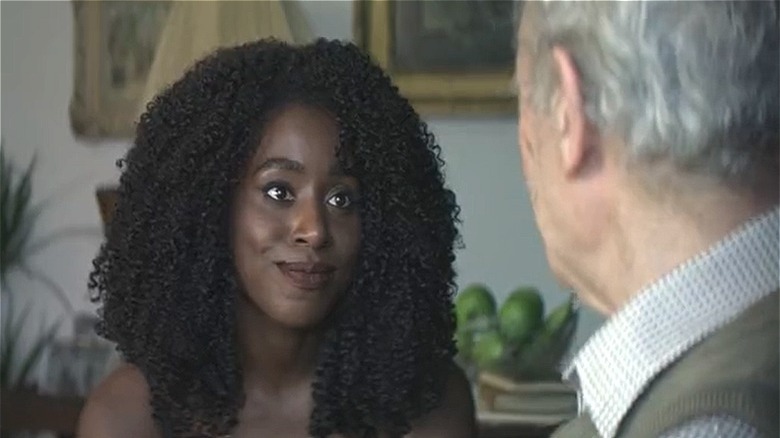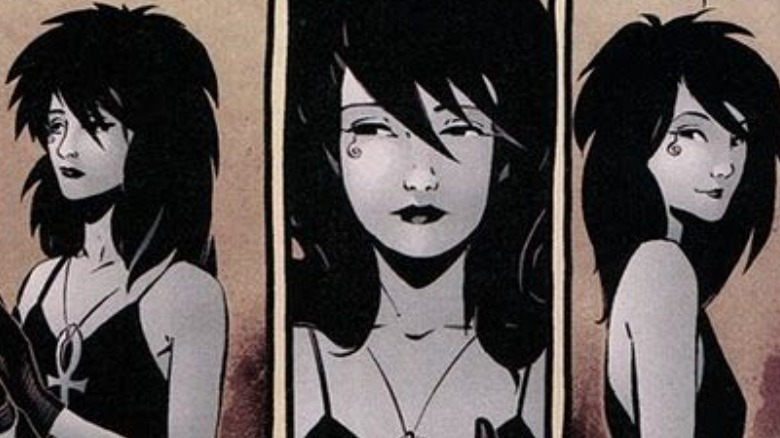Here's The Sandman Scene That Made Neil Gaiman Cry
Neil Gaiman wove a rich, dark, beautifully-twisted fantasy world in the beloved comics series, "The Sandman," which offers complex characters that are both supernatural and human in nature. Adapting "The Sandman" into live action has always been a mammoth task, with various attempts to do so failing and getting trapped in development hell. Netflix's "The Sandman" managed to overcome these obstacles, and the series will drop soon, ushering long-time fans and new audiences into the beautifully surreal world of "The Sandman."
Gaiman himself is directly involved with the Netflix adaptation, having developed the series alongside David S. Goyer and Allan Heinberg. Interestingly, a particular "The Sandman" scene made Gaiman cry — one that featured two of the Endless, siblings Death (Kirby Howell-Baptiste) and Dream (Tom Sturridge) — and it is not difficult to understand why. Check out Gaiman's response and the scene in question below:
Small warning. I cried the first time I saw this scene in the finished episode. If you are wondering why I cast Kirby as Death, this is why. https://t.co/pXfB6YFVeg
— Neil Gaiman (@neilhimself) July 25, 2022
In case you need more context about what is happening, don't worry, I got you. Here's who these characters are and why this scene is a particularly emotional one for Gaiman and fans of the comics.
The gentle beckoning of death
"The Sandman" comics touch upon a lot whole of themes — the meat of the narrative is about seven siblings known as the Endless, who are eternal manifestations of states of being, such as Destiny and Delirium. "The Sandman" begins with Dream, aka Morpheus, being trapped by a group of occultists who accidentally lure him instead of his sister, Death. This results in him being trapped and weakened over time, affecting the process of dreaming in the process.
In the comics, Death emerges as the most likable among The Endless, for many reasons. Despite being the personification of something so morbid, i.e. the end of life, she is a cheerful, gentle person who wears alternative clothing and offers comfort to those she is supposed to usher into the next phase. Dream is pretty close to his sister, relying on her for advice, as she is extremely grounded and wise. This aspect, especially her empathy, is highlighted in the scene above, wherein she gently beckons an old man named Harry and helps him part ways with life.
Death is a far cry from traditional representations of the figure in mythology or fantasy fiction. She is not a figure eager to collect souls like the one depicted in "Harry Potter and the Deathly Hallows," nor is she apathetic like Death in "Supernatural." In "The Sandman," Death is maternal, understanding, and gentle, using humor to make light of difficult scenarios and easing souls into the next phase, which she has no say or control over. This aspect has been realized in the clip above — everything from her acknowledging the beauty of Harry's music to reassuring him that he's ready to move on, Howell-Baptiste as Death is exactly how I imagined her to be.
Why Death is such a compelling character
Gaiman is understandably emotional about the scene in question, as it must be overwhelming for him to witness the characters he so lovingly etched come to life in live-action, in a way that is faithful to the ethos of what he intended them to represent. There will be a lot to unpack when "The Sandman" drops, for sure, as the series will almost exclusively focus on Dream and his journey from being a powerful being to a shell of a person, on the verge of having lost everything he ever built.
Circling back to Death, there are reasons why she is a character most people resonate with. Death understands that her job is simply a job: she does not think of herself as a merciful being for the way she chooses to engage in the process of departing souls; she is naturally empathetic and asserts that when the last being in the universe dies, her job will be finished. She says that she will simply "turn out the lights and lock the universe behind her," indicating that she takes her job seriously, although she is not highly dependent on it to feel some semblance of power.
There's growth in her character, as she was not always the warm, kind being she is throughout the comics. Death used to be matter-of-fact and rather cold initially, but evolved over the years to become warmer, which is something you choose to embody every day. It will be interesting to see whether Netflix's "The Sandman" captures these nuances inherent in her character, but I am hoping that will absolutely be the case with Gaiman himself at the helm of the series.
"The Sandman" is available to stream on August 5, 2022, on Netflix.


